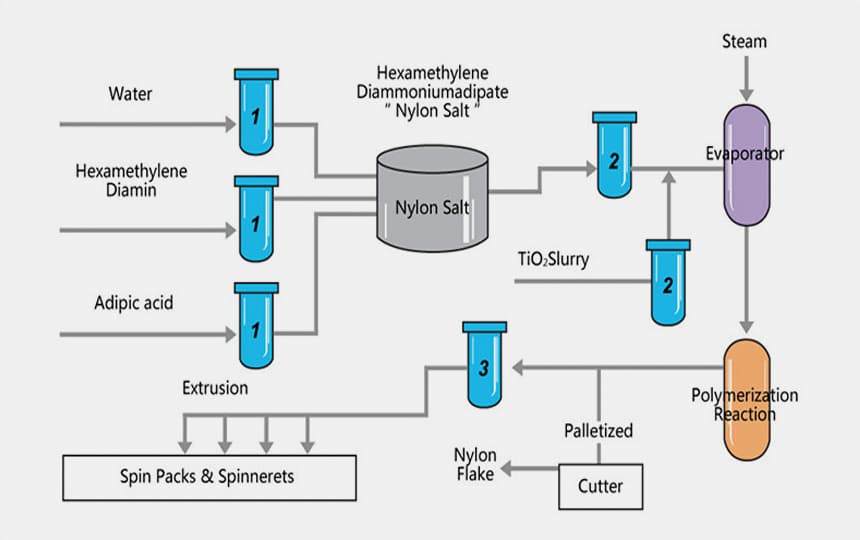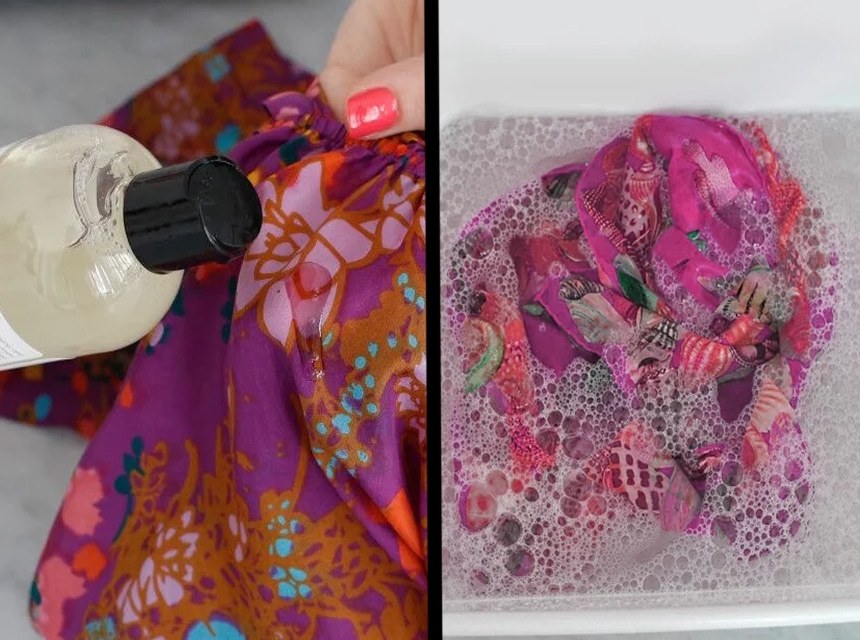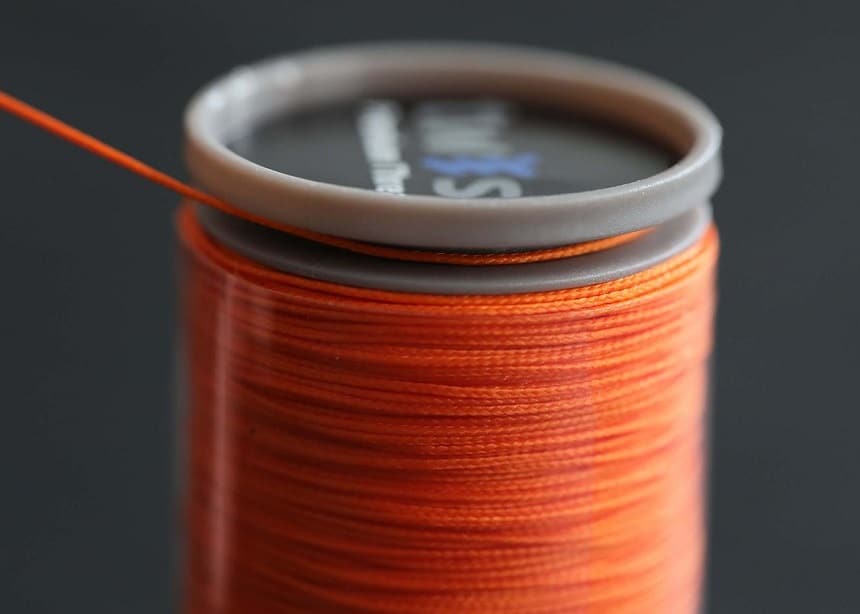

There are over 28 types of fabric available today. If you are a keen sewing enthusiast or enjoy crafting, you’re likely to be familiar with many of these types of fabric. However, one you may not have worked with before is polyamide fabric.
Understanding the properties of different fabrics and how they are made can help you to design your craft projects better. When you know the types of fabrics that can help to keep you cooler or warmer, you can not only look good in your home sewn clothing, but you can choose the right fabric for the project.
Polyamide nylon fabric is a stretchy material that is typically used for clothing, but it can be used for other purposes. Here we’ll delve into the polyamide fabric properties and this fabric’s best uses.

Polyamide fabric is a synthetic material. Like polyester, it is made using petroleum products, but the chemical compounds are different. So, while it may be similar to polyester, it is a different type of synthetic fabric.
As with polyester, nylon and other synthetic fabrics, the polyamides used to make this fabric are not the same as naturally occurring polyamides that are found in silk, wool and other fabric material proteins.
Typically, the ingredients to make polyamide are synthetic or have a source from different chemical products. There are also aliphatic polyamides, or nylons and aromatic polyamides or aramids.
There are also several classes of nylon, with different versions produced for different applications.
So, polyamide fabric may actually be made using recycled polyamides.
As we’ve discussed above in answer to the question, what is polyamide fabric made of, the polyamide chemicals used to make this fabric are completely synthetic. This means that polyamide clothing tends to be stretchy and comfortable.
Additionally, you can combine polyamide with other fibers to create cotton polyamide fabric or other blends. This will create a fabric with more stretch, and it is the easiest way to tell if a fabric is 100% cotton or if it is a polyamide blend.
Polyamide fabric has a number of other properties that make it a great material for making types of dresses and other clothing items. These properties include:

Making polyamide fabrics involves a nine-step process. The first stage is to get crude oil and extract the diamine acid, which is then forced to mix with adipic acid to create nylon salt polymer.
When crystallized, the nylon salt is heated to create a hot liquid that can then be put through a metal spinneret to extrude long fibers. The fibers can then be put onto a spool or bobbin before it is sent to the stretching phase of the production process.
The stretching process increases the fiber’s elasticity and stretching ability. After this is complete, the fibers are put onto a drawing spool and sent to the spinning production stage.
After spinning, the fibers are ready to be made into clothing material. Some fibers remain pure to create 100 polyamide fabric, but at this stage, the fibers can also be blended to create 80 polyester, 20 polyamide fabric or a polyamide cotton blend. Depending on what fibers are used will impact the polyamide fabric stretch.
Of course, the specific manufacturing process will vary according to the type of fabric being produced and the manufacturer itself.
When you use the strict chemical definition of polyamide, this type of fabric can be used for practically any type of consumer textile product. For example, silk is used for a variety of garments, while lots of clothing items were made with wool before the development of synthetic and semi synthetic fabrics.
However, when you use the term polyamide for synthetic fabrics, the potential applications are more limited. Synthetic fabrics were originally developed as a silk alternative, specifically as another option for silk stockings. Silk is expensive and time consuming to produce, so manufacturers were looking for a more cost-effective alternative.
In the end, consumers found nylon was inferior to silk, so other substances were mixed with the pure nylon to increase durability for stockings.
This is why it is very rare to find pure nylon consumer fabric items. Polyamide fabrics are often a blend that allows production of soft, elastic shorts, t-shirts, stretch pants and other clothing. Polyamide is a popular fabric for underwear.
It is important to note, polyamide materials are far more common in non-textile products. This material is an excellent flexible product that is used in thousands of different consumer goods.

Once you start looking for polyamide fabrics, you may be surprised at the variety on the marketplace and the retailers offering these products.
As we’ve discussed above, there are a variety of uses for polyamide material, so it is safe to assume that there are a variety of types of polyamide fabric.
Synthetic polyamides can be developed into different fibers, which creates different types of fabric. These include:
Unfortunately, producing polyamide fabrics is generally considered to have a negative environmental impact. Since there are concerns about crude oil unsustainability, there may be pushback against using it as a fabrics base material.
There has been a staunch movement against nylon production for decades. While other polyamide fabrics such as Kevlar or Nomex are considered to be necessary, using polyamides as an accessory material has steadily lost popularity.
Polyamide fabric is naturally unsustainable, and may be environmentally degrading. Additionally, the production processes used to make these fabrics can also damage the ecosystem.
For example, water used during production may introduce pollutants, while the production of adipic acid can release nitrous oxide.
Additionally, polyamide fabrics are not biodegradable. While it is possible to recycle polyamides, they are considered to be practically a permanent pollutant.
This may lead you to wonder: is polyamide fabric toxic? The short answer is that these fabrics may be a little toxic. However, in most cases, clothing manufacturers ensure that their items can safely come into contact with the skin without causing harm.
In fact, if you are allergic to wool, you are likely to appreciate the comfort, soft texture and warmth offered by this fabric without worry of skin irritation.
While initially polyamide fabric was more expensive to produce than silk, today, it is generally quite inexpensive. The cost of polyamide materials is well below the price of organic materials.
However, highly specialized polyamide fabrics such as Kevlar can be quite expensive.
So, the cost of polyamide fabric will depend on its intended use. If you’re looking to make a polyamide dress or skirt, the fabric is likely to be quite inexpensive. However, if you’re purchasing a Nomex jacket, you can expect a premium price tag.
Another factor influencing the cost of polyamide fabrics is the weave. Lighter weight open weave fabrics are likely to be cheaper to purchase compared to a heavy weave, heavier weight polyamide fabric.
This means that you will need to consider the intended use of the fabric before you can determine if it represents good value compared to the alternatives.
Polyamide is a flexible synthetic material that can be used for sports apparel, outerwear and underwear. While the fabric is generally water resistant, the material in jackets and shirts often cannot be dry cleaned. So, there are some care measures that you need to consider before attempting to clean your polyamide item.
If you have an unlaunderable item, such as a jacket or upholstery, you will need to spot treat any marks or stains. To spot treat, use a Wash & Stain bar and gently work the wet bar into the stained areas. You can also remove the soap and dirt using a wet lint free cloth. Be sure to remove all traces of soap.
You can dampen the cloth as necessary and repeat the spot treatment until you’re satisfied.
If you have a washable polyamide item, you should still pretreat any stains before you put it in the laundry. Focus on areas susceptible to dirt, such as the cuffs, neckline or underarms. However, be sure to look for any set stains such as grass, blood or coffee and use an appropriate stain remover product. There are products that are ideal for tannin or protein stains, but some products are general stain removers to remove grease, dirt, oil or make up.

If you have delicate polymer items, handwashing is the safest cleaning method. If you have hosiery or other delicate items, add a capful of laundry detergent or hand wash detergent to a sink or washbasin of cool water. Always try to use cool water, as hot water can cause shrinkage.
Submerge the items and use your hands to gently agitate the water to ensure the soap is evenly distributed. Allow the items to soak for as long as 30 minutes. Rinse the items well using cool water. Rinse until there is no trace of detergent on the item.
Be sure to press the water out of your items, as wringing can cause damage.
If you have machine washable polyamide clothing items, use a normal cool cycle on your machine. Be sure to wash like colors and fabrics together to avoid damage. If your item is particularly dirty, add a prewash to the cycle.
Many items can be tumble dried on low or line dried without any worry about shrinkage. You can also reduce wrinkles by removing the items when damp or allowing them to line dry.
It is a good idea to clean your items before you put them into storage. It is a good idea to keep your items in a breathable storage bag to provide bug protection. Plastic can encourage yellowing and may trap moisture, which can lead to mildew and encourage bugs.
Just bear in mind that not all fabrics and fabric items will behave in the same way. So, the best policy is to stick to the manufacturer’s care instructions on the garment label.
If you’re planning on using polyamide fabric for your next sewing project, you need to be aware that this fabric has different requirements compared to cotton or other natural fabrics. So, we’ve compiled some sewing tips to help you to achieve the results you’re looking for with the minimum of fuss.
Before you even thread a needle or set up your sewing machine, be sure to wash your polyamide fabric. You should wash in cold water and either line dry or dry on a low heat setting. This will ensure that there are no excess coatings or colorants that may interfere with the sewing. It will also ensure that you take account of any minor shrinkage before you start cutting out your pattern.
Polyamide is made from small fibers that can easily snag or tear. So, you can avoid causing any damage by swapping out a used, worn out needle for a new one. Even a minor flaw on your needle could snag the fabric and make a visible run or hole.
Additionally, it tends to be easier to create neat stitches with a smaller needle. This will allow you to move the needle through the fibers without causing damage. If you use a larger needle, you risk seams being weakened or at worst, causing an unsightly hole in your fabric.

When you’re sewing polyamide fabric, you also need to choose your thread carefully. It is best to choose a thread that as closely as possible matches the elasticity of your fabric. So, try to look for a polyester thread.
Although polyester thread for hand sewing is simple enough, there are some considerations when you are machine sewing. Firstly, wind your bobbin slowly and keep an even, slow pace to your sewing. If you feed thread too quickly, it may generate heat and friction, which will cause stretching. As the thread cools, it will shrink back and cause the seams to bunch.
Before you cut out any pattern pieces, iron your fabric with a synthetic setting. If you can’t remove any creases with your iron, you can remove the offending piece before you proceed.
If your polyamide fabric is a satin type polyester, it may be slippery, so you will need to take extra care. You can make life a little easier by using tissue paper to hold your cut out fabric pieces before you start sewing. This will create a stable backing to stop your fabric sliding around as it is under the needle.
Polyamide fabric is a flexible material that can be used for creating clothing items, sports apparel, gear and specialty items. This fabric is synthetic with a crude oil base, so it may not be the most environmentally friendly option, but it can provide some unique characteristics.
Different polyamide fabrics can be water resistant, warm, soft, dye resistant and chlorine resistant. Kevlar and Nomex are examples of polyamide fabrics that have unique properties that are invaluable for hard wearing and fire resistance.
Polyamide fabric naturally has a stretchy feel that is difficult to replicate with natural fabrics. This means that you can produce form fitting or more forgiving clothing items that would be difficult with cotton.
However, you can also enjoy the best of both worlds with polyamide fabric blends. This will allow you to create a stylish item of clothing with all the benefits of polyamide fabric.
So, if you have a project in mind, don’t assume that you are limited to working with cotton, wool or other natural fabrics. Explore the world of polyamide fabrics and the fantastic qualities they can offer.